#rebecca mclane hamilton
Text


Meanwhile two more of the McLane children had been married. Rebecca, the oldest, was twenty-nine when she was married in December, 1842, to Philip, the youngest and perhaps the least prepossessing of Alexander Hamilton's sons. For some reason, Louis McLane was unhappy about the possibility of any marital alliance between his children and the Hamiltons; he feared at one time that young Louis might fall in love with a Hamilton. But he approved Rebecca's marriage, again deciding he had no choice, gave sententious advice (Rebecca should devote herself to her husband's welfare and should not neglect her religious duties), and in due time anxiously awaited news of the children born to Rebecca and Philip, hoping they would name a child for Rebecca's grandfather, old Colonel McLane, whose favorite she had been. Faithful Rebecca named children for both her father and grandfather, and though Louis McLane Hamilton met an early death as a soldier in the Indian Wars Allan McLane Hamilton lived to win distinction as the leading psychiatrist, or “alienist,” as he was usually called, of his day. But when Kitty suggested to Louis that he give Rebecca's firstborn $250, Louis demurred: if he did this for one grandchild, he must do it for the others, and he simply could not afford to take $250 a year from the costs of his family and the interest on his debts; the time for the winding up of his affairs was closer, he was sure, than Kitty realized.
Munroe, John Andrew. Louis McLane: Federalist and Jacksonian. United States, Rutgers University Press, 1973.
Wether it's Munroe, or just the McLane's perspective, this book is quite critical of Phil II. But I'm curious as to why Louis would supposedly be unhappy about the match between between his daughter and a Hamilton. The Hamiltons' and McLanes' seemed to have been connected prior to the marriage, and most of the family was Jacksonians just like Louis McLane. Hamilton himself was even acquainted with Louis's father, [x] [x] and the marriage was praised as being a proper match by many (Even Eliza herself, you can find in the first link).
I have omitted love to the dear children & now add it—Not a word has been heard from Lizzie [Middleton]—Her mother is in a state of the most anxious expectation—I was forgetting a piece of good news—Rebecca McLane's engagement to Mr Hamilton of NY—the brother of John C. our acquaintance, & an excellent match for her I hear—
[Eliza Middleton Fisher to Mary Hering Middleton, 15 December 1842]
Fisher, Eliza Middleton, and Middleton, Mary Hering. Best companions : letters of Eliza Middleton Fisher and her mother, Mary Hering Middleton, from Charleston, Philadelphia, and Newport, 1839-1846. United States, University of South Carolina Press, 2001.
So, not completely sure where that lies on the accuracy scale, but I'm also not an expert on the McLanes'. And as a sidenote, I've theorized about Rebecca's religious beliefs here.
#amrev#american history#19th century#louis mclane#rebecca mclane hamilton#rebecca mclane#allan mclane#philip hamilton ii#history#hamilchildren#hamilton family#hamilton children#hamilkids#hamilton kids#cicero's history lessons
22 notes
·
View notes
Text
Philip Schuyler Hamilton, 1832-33?

Inscription noted here: https://www.findagrave.com/memorial/225191670/philip-schuyler-hamilton
Philip Schuyler Hamilton, Son of Philip and Rebecca Hamilton, Died March 19, 1833, Aged 14 Months
This tombstone is in the same Poughkeepsie Rural Cemetery lot as Philip II and Rebecca McLane Hamilton and their other two known kids, Louis (1844-1868) and Allan (1848-1919). It’s clearly older than the other gravestones. Hmm. Let’s call it 1853 instead of 1833!
3 notes
·
View notes
Note
who is Rebecca Hamilton
if my memory serves right it’s the wife of Philip Nº2, Rebecca McLane Hamilton
3 notes
·
View notes
Text
So I asked my Instagram followers who they thought was the most attractive Hamilton son (my design, not historical)....
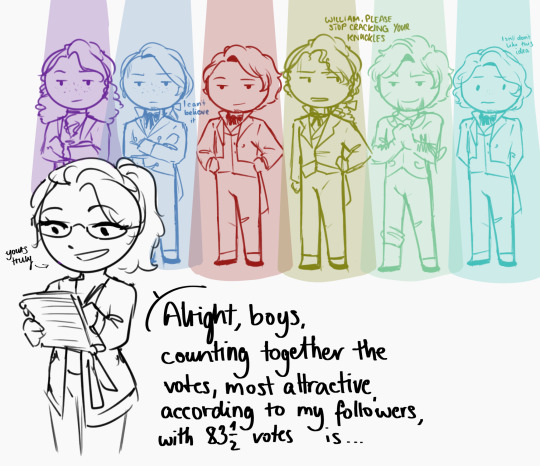

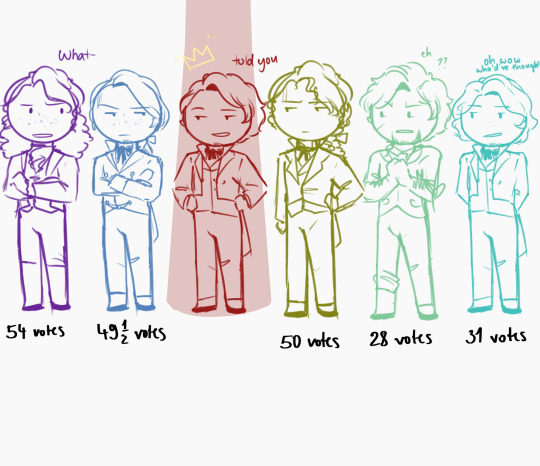


Does this belong on tumblr?? No idea but have it idk
#philip hamilton#alexander hamilton jr#james alexander hamilton#john church hamilton#william stephen hamilton#philip hamilton ii#mary morris hamilton#maria eliza van den heuvel hamilton#eliza knox hamilton#rebecca mclane hamilton
118 notes
·
View notes
Text
Elizabeth Hamilton to Catherine McLane, 1842
“It is with great gratification, my Dear Madame, that I have received your kind letter expressive of your Approbation of the Union of your Daughter with my Son. Her most intimate friends have given her such a high character for Piety and Amiablity that I am assured my son has made a selection which will promote his happiness, and may he give your child and yourself every mark of his attention is the prayer of his affectionate Mother. I regret the season of the year and my advanced age will deprive me of the pleasure of being present at the Marriage of our children. Remember me kindly to Mr. McLane and my Daughter. With great regard,
Elizth. Hamilton”
Eliza to her youngest son Philip Hamilton’s future mother-in-law, just before his marriage to Rebecca McLane.
Source: Recollections of an Alienist, p.25
25 notes
·
View notes
Note
Hi, I came from your other account, "the eliza papers" and I was just wondering who is Rebecca Hamilton? Eliza addresses her as "my dear daughter", but nothing pops up if you search her.
She was little Phil’s wife.
Her maiden name was McLane and her father, Louis McLane, was uhhhh kind of interesting. He switched between parties and ended up in Jackson’s cabinet, first as Secretary of the Treasury (how you like those banks?) and then as Secretary of State.
4 notes
·
View notes
Text
a moment of silence for sidney holly, eliza knox, mary morris, maria eliza van den heuvel and rebecca mclane for having to exist under the same roof as a member of the hamilton family
14 notes
·
View notes
Text
Letters of Joy
read it on AO3 at https://ift.tt/2RTfeaW
by strangehamiltonchild
Another retelling of the Hamilton story, from his (and perhaps another’s) perspective.
Words: 13, Chapters: 1/?, Language: English
Series: Part 1 of Letters
Fandoms: Hamilton - Miranda, American Revolution RPF
Rating: Teen And Up Audiences
Warnings: Graphic Depictions Of Violence, Major Character Death
Categories: F/M, M/M
Characters: Rachel Faucette, Pete Lavien (mentioned), James Hamilton, James Hamilton Jr., Alexander Hamilton, Peter Lytton, Thomas Stevens, Edward “Ned” Stevens, Hercules Mulligan, Gilbert du Motier Marquis de Lafayette, Adrienne de Lafayette, John Laurens, Martha Manning (mentioned), Francis Kinloch (mentioned), Angelica Schuyler, Elizabeth Schuyler, Margarita “Peggy” Schuyler, John Church, Stephen Van Rensselaer, Phillip Hamilton, Angelica Hamilton, Alexander Hamilton Jr., James Alexander Hamilton, John Church Hamilton, William Hamilton, Elizabeth Hamilton Holly, Phillip Hamilton II, George Washington, Martha Washington, Sydney Augustus Holly, Rebecca McLane, Mary Morris, Eliza Knox Hamilton, Mary Lewis (Maria Reynolds), Susan Reynolds, Philip Schuyler, Catherine Van Rensselaer Schuyler, Tench Tilghman, Richard “Kidder” Meade, Joseph Reed, John Fitzgerald, Robert Hanson Harrison
Relationships: Rachel Faucette/Peter Lavien (mentioned), Rachel Faucette/James Hamilton, Alexander Hamilton/John Laurens, Alexander Hamilton/Elizabeth Schuyler, John Laurens/ Francis Kinloch (mentioned), Hercules Mulligan/Elizabeth Sanders, Adrienne de Lafayette/Gilbert du Motier Marquis de Lafayette (mentioned), George Washington/Martha Washington, John Laurens/Martha Manning (mentioned), Alexander Hamilton Jr./Eliza Knox Hamilton, James Alexander Hamilton/Mary Morris, Eliza Hamilton Holly/Sydney Augustus Holly, Phillip Hamilton II/Rebecca McLane, Angelica Schuyler/John Church, Margaret "Peggy" Schuyler/Stephen Van Rensselaer, Catherine Van Rensselaer Schuyler/Philip Schuyler, Mary Lewis (Maria Reynolds)/ James Reynolds
Additional Tags: that’s a lot of characters, Ohhh boy, also j.c. ham. legit had 14 kids, he named one Laurens, no joke
read it on AO3 at https://ift.tt/2RTfeaW
4 notes
·
View notes
Photo

Hamilton’s Kids - 8# Philip Hamilton II
· HISTORY LESSON!:
Born on June 1, 1802, Philip Hamilton II was the youngest child of Eliza Schuyler and Alexander Hamilton. He was named in memory of his oldest brother, also Philip Hamilton. Known as "Little Phil", according to psychiatrist Allan McLane, he "manifested much of his father's sweetness and happy disposition, and was always notably considerate of the feelings of others, and was punctilious to a fault in his obligations." Due to his widowed mother's poverty after Alexander Hamilton's death in 1804, during his childhood Philip "was denied those advantages accorded to his elder brothers, and had, in every sense, to make his own way." (a tradition by now in the Hamiltons lol) Philip stood nearly six feet tall (tall baby). He had no college education, but was able to enter the profession of law after studying with one of his brothers (James!) in New York. He served as an assistant United States Attorney during the 1830s under his older brother James Alexander Hamilton. His legal practice was primarily in admiralty cases. At the end of the Civil War, Philip served as Judge Advocate of the Naval Retiring Board at the Brooklyn Navy Yard. According to the New York Herald, he "led a quiet life" after 1865. An abolitionist, Philip assisted the Underground Railroad in the escape of at least one slave by concealing the fugitive in his cellar until he could safely resume his travel to Canada. Phil married Rebecca McLane, had two sons, and he died, "comparatively poor,"on July 9, 1884 in Poughkeepsie, New York.
Philip's son described his career as "a hard, up-hill professional life," with legal clients that included a "very great" number of the poor, especially sailors, and much of his time "given up to unselfish acts."
The last and not the second attempt at all, the little Phil! I loved draw him, and finally we ended with all the Hamilton's Kids!
Headcanons!
- When he born, everything were really messed up already
- Anyways he grew healthy and happy
- Pretty quiet all the time
- Doesn't talk much, but thinks a lot
- T-A-L-L
- Loves the sea
- Talks in dreams
- Hates pirates
- Was two years old when daddy died, he doesn't remember much of him
- He knows that he was named after his deceased big brother, and that he was pretty cool in everything he did (except in duels lol)
- Can't stand near guns or a fight atmosphere
- Hates fights, but he wanted to fight injustice anyway, so he became a attorney, like most of his brothers
- Lizzy loves to try to count his freckles
- Wishes he had been able to meet Angie before her mental breakdown, because he is really comfortable with her
- Like Lizzy, cares about everyone
- Responsable, generous and constant at work
- Happy with less, didn't ask for much in his childhood
- Has a giant imagination, loves to invent stories
- Respects a lot his brother James and loves him so much
- Sometimes mom stands looking into his eyes for long time. He later discovered that it's because he has the same eye color that his brother Philip
- He dreamed of buy a ship and became a sailor when he was a kid
- Even so, hates fish
Hamilton’s Kids - 1# Philip Hamilton
Hamilton’s Kids - 2# Angelica Hamilton
Hamilton’s Kids - 3# Alexander Hamilton Jr “AJ”
Hamilton’s Kids - 4# James Alex Hamilton
Hamilton’s Kids - 5# John C. Hamilton
Hamilton’s Kids - 6# William S. Hamilton
Hamilton’s Kids - 7# Eliza Hamilton
ALSO ON DEVIANTART!
Enjoy!
youtube
339 notes
·
View notes
Note
After the divorce , what has become of Alexander hamilton's father? Also do you any information about the second philip hamilton? Little phil?
Alexander Hamilton’s parents never got divorced.
Did something with Little Philip Hamilton here.
Philip Hamilton was born on either June 1 or 2, 1802 and died on July 9, 1884. There is an actual photograph of him from when he was around seventy-eight. According to a primary source he “manifested much of his father’s sweetness and happy disposition, and was always notably considerate of the feelings of others, and was punctilious to a fault in his obligations” In contrast to his father and his other brother’s shorter statures (5′7) “little” Phil was six foot tall. Because of his mother’s debt after the death of his father, he was denied the privileges his older brothers had (high education) and he never attended college, later becoming a lawyer. Hamilton practiced law in New York, and served as an assistant United States Attorney during the 1830s. Hamilton also served as Judge Advocate of the Naval Retiring Board at the Brooklyn Navy Yard. Hamilton married Rebecca McLane and they had two sons: Louis McLane Hamilton (July 21, 1844–November 27, 1868) and Allan McLane Hamilton (October 6, 1848–November 23, 1919). Philip Hamilton died nearly poor on July 9, 1884 in New York.
42 notes
·
View notes
Text
Rebecca Hamilton's copy of The Book of Common Prayer
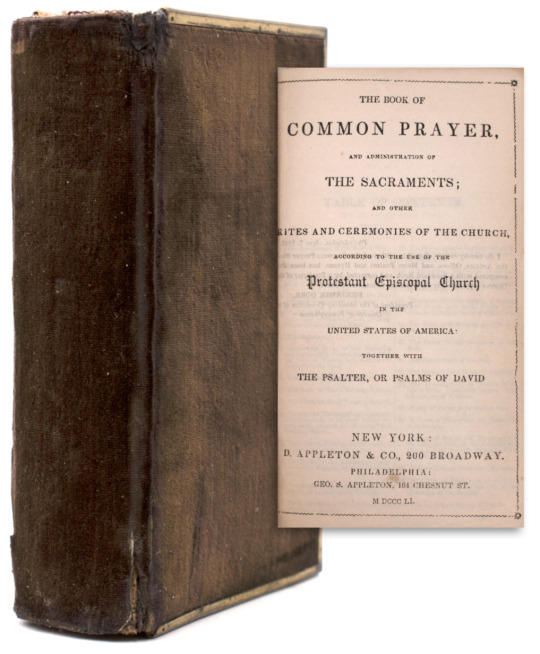
The Book of Common Prayer was initially published in 1789 and served the U.S. Episcopal Church for more than a century. It was known as The Common Pray, prior to its revision in 1892. This book is fairly similar to its predecessor, the English Book of Common Prayer from 1662, at least for the main services. This edition was published by D. Appleton in New York, 1851.
The book is presumably a ten-year anniverary present from Philip Hamilton II - the youngest son of Alexander Hamilton - to his wife, Rebecca McLane. The two were married December 29, 1842, and inside is inscribed in Phil's handwriting shows that it was gifted on December 25, 1852;
Rebecca Hamilton
From your husband
December 25, 1852

This could suggest that Rebecca had a religious character, a common tradition in the Hamilton family. Particularly Protestants from the Episcopal Church, which the book is part of.
Eliza and Hamilton were both Protestants, albeit of different denominations. Although they raised their children pretty solidly on the same virtues. After moving to New York, they both went to Trinity Church, which was an Episcopal church and some of the children were baptized there. Older brothers Philip and Alexander Hamilton Jr. were also taught by Reverend William Frazer, the rector of St. Michael's Episcopal Church. [x] Hamilton would also read the morning services of the Episcopal church to his children. [x] And Hamilton's final Holy Communion on his deathbed was given by Reverend Benjamin Moore, the second Episcopal bishop of New York. [x]
In Albany, Eliza was raised in the Dutch Reformed Church. Whereas Hamilton was raised in the Presbyterian Church, with Reverend Hugh Knox - the minister of the Presbyterian church on St. Croix - was his mentor. Later, they married at the Schuylers's home in Albany by Eliza's pastor from the Dutch Reformed Church. And Hamilton's friend, Reverend Eliphalet Nott - another Presbyterian, but a minister - delivered a well-known eulogy for Hamilton that condemned dueling. Although, Hamilton also contributed to the construction of a new Presbyterian church in Albany, and at his deathbed attended Reverend John Mason, who was a Scotch Presbyterian minister. So, he had not converted to the Dutch Reformed Church.
Source; AbeBooks
#amrev#american history#jackson era#philip hamilton ii#rebecca mclane hamilton#alexander hamilton#historical alexander hamilton#elizabeth hamilton#elizabeth schuyler#history#historical artifacts#hamilchildren#hamilton family#hamilton children#hamilkids#hamilton kids#cicero's history lessons
40 notes
·
View notes
Text
So, Angelica seems to have been placed under the care of various family members due to her impaired mental health. And while most of the time she was either with Holly or Elizabeth, it appears for a few years she stayed with Phil II while Elizabeth and Holly took a trip West to see William in 1837-8.
“Our passage will be tedious as we go against the stream. Let me hear from you, particularly respecting Angelica and all the family.”
(source — Elizabeth Hamilton to Philip Hamilton II, [May 23, 1837])
This might be a coincidence with names, but I think I might have found a passing mention of Angelica staying with the McLane's just a year after Elizabeth's and Holly's excursion;
“Got a
letter yesterday from Forman, saying that there is a young lady
from N. York, Miss Angelica Hamilton, very handsome & agreeable,
staying at McLane's. He advises me to come down & try my luck.
I expect to go down to plant trees etc., towards the end of the month,
so that I may perhaps see her.”
(source — The Diaries of Sidney George Fisher, 1857-1858)
Ignoring the fact that this might imply Forman was suggesting Fisher try to court Angelica, if this is truly Angelica Hamilton - the eldest daughter of the Hamiltons', and not just a grand daughter or some other Hamilton - that means Phil was taking care of Angelica for longer than the trip to West. Additionally, this may have been when Phil first met his soon-to-be wife, Rebecca. Phil didn't get married until 1842, and the date in which Fisher notes this is March 20th, 1839.
Phil must have played some part in it as I don't believe there were any other Hamiltons that had any business with the McLanes, and especially Angelica being with them for unexplained reasons.
#amrev#american history#jackson era#angelica hamilton#philip hamilton ii#sidney george fisher#rebecca mclane hamilton#historical alexander hamilton#history#hamilchildren#hamilton family#hamilton kids#hamilkids#hamilton children#cicero's history lessons
16 notes
·
View notes
Text
“By His Excellency’s command, I inclose you a Resolve of Congress of the 16th of December last, by which you will find that Capt. McLane’s Company late of Pattons Regiment is annexed to the Delaware Battalion in the arrangement of the Regs. therefore under your Command, you are to Comprehend Captn. McLane and his Officers.”
(source — From Alexander Hamilton to Colonel David Hall, [April 20, 1779])
Little would Hamilton know that Captain Allan McLane - of the Delaware Regiment - would have a granddaughter, Rebecca, that would marry Hamilton's youngest son, Philip Hamilton II. And he would later have a grandson named after that same captain!
#amrev#american history#american revolution#alexander hamilton#historical alexander hamilton#history#allan mclane#david hall#letters#Cicero's history lessons#philip hamilton ii#allan mclane hamilton#rebecca mclane hamilton
19 notes
·
View notes
Text
I was reading some of Allan McLane's work, for those that don't know, he was a grandson of Alexander Hamilton, being the second son of Philip Hamilton II and Rebecca McLane. I noticed something intriguing about one of his books. In the second volume of A System of legal medicine, by McLane and Lawrence Godkin published in 1894, there is an article titled; ‘Sexual Crimes’. The section is written by one of the many collaborates, Charles Gilbert Chaddock. Chaddock was a Professor of Diseases of the Nervous System, and neurologist to Rebekah Hospital. An additional fun fact, the first known use of the term homosexual was in Chaddock's 1892 translation of Richard von Krafft-Ebing's Psychopathia Sexualis, a study of sexual practices.
Chaddock discusses a lot of sexual topics but one is “sexual inversion”, which was a theory of homosexuality popular primarily in the late 19th and early 20th century. Sexual inversion was believed to be an inborn reversal of gender traits: male inverts were, to a greater or lesser degree, inclined to traditionally female pursuits and dress and vice versa.
The most common sexological theory of same-sex desire was that it was the result of physical, emotional, or psychological “inversion.” In other words, the gender of persons who desired their own sex was somehow reversed. When a man desired a man, it was actually a woman—presumably existing within the man's body—who was desiring a man. When a woman desired a woman, it was actually a male essence within the woman's body who felt that desire. This metaphysical explanation, accepted as scientific (at this point of the emergence of psychology as a science), had a substantial effect on the public imagination for the next fifty years. It became how many people understood the phenomenon of same-sex desire. Theories of Inversing were published widely, and sexologists were understood by the average person to be the experts on a “new science.” The idea of the “invert,” or “third sex,” also quickly and profoundly informed two popular and lasting stereotypes: the mannish lesbian and the effeminate homosexual man. (Although there were preexisting stereotypes of the effeminate male, sexological taxonomy invented him as a homosexual man.)
Source — A Queer History of the United States, by Michael Bronski · 2011
Chaddock wrote that;
Since in any case sexual inversion is but a phenomenon arising from a neuropsychopathic condition, as previously indicated, it is seldom an isolated manifestation, but is most frequently observed in combination with other sexual perversions. In accordance with this, the medico-legal questions arising in sexual inversion may be identical with those raised in the sexual perversions previously considered. The further possibilities of a criminal character are related to the crimes of pederasty. The individual affected with contrary sexuality satisfies himself with men by means of passive or mutual onanism, or by coitus-like acts (coitus inter femora); if active pederasty is performed, it is only as a result of intense sexual desire, or out of wish to please another. Passive pederasty may be performed by contrary sexual individuals to please the active party, or out of lust where they feel themselves entirely in the feminine role. To distinguish such cases from pederasty not dependent upon a pathological condition, it is but necessary to exclude the existence of psychosexual inversion, and to remember that where this crime is performed apart from perversion it is as a means of sexual indulgence in the absence of opportunity for natural satisfaction, and as a new means. of sexual gratification where natural methods of sexual pleasure have been exhausted by excess. Non-pathological passive pederasty is practiced only for gain.
Source — A System of legal medicine, Volume 2, by Allan McLane Hamilton · 1900
#amrev#american history#queer history#allan mclane#allan mclane hamilton#charles gilbert chaddock#19th century#history#cicero's history lessons
21 notes
·
View notes
Note
Can we hear a little bit about Little Phil? I've been having a hard time finding information about him :((
Philip Hamilton II was born on the 1st or 2nd of June, 1802. According to his biographer son, Allan McLane Hamilton, his birthday was on the 2nd, while his New York Herald obituary as well as his grave claims it to be the 1st. He was the youngest of Alexander Hamilton's and Elizabeth ‘Schuyler’ Hamilton's children. He was named in memory of his oldest brother, Philip Hamilton, whom died a year prior to his birth on the 24th of November, after a fatal duel with George I. Eacker caused after an aggressive encounter at the Park Theater.
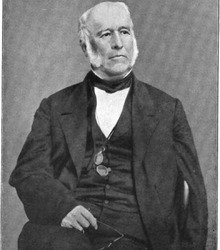
(Philip Hamilton II in 1880)
In a letter from Hamilton to Elizabeth, dated; October, 1803, Hamilton passingly mentions of one year old Phil;
“I shall be glad to find that my dear little Philip is weaned, if circumstances have rendered it prudent. It is of importance to me to rest quietly in your bosom. Adieu my beloved.”
(source)
Phil was only two years old when his father would die from a duel between him and Aaron Burr on the 12th of July, 1804. Probably due to his young age, he was not present at his father's funeral, as reported only Alexander Jr, James, John, and William were there;
“On the stage erected in the portico of Trinity Church, Mr. Gouverneur Morris, having four of General Hamilton’s sons, the eldest about sixteen and the youngest about six years of age, with him, rose and delivered to the immense concourse in front an extemporary Oration,”
(source)
While lacking not only the memories of his father, Phil also lacked a decently wealthy childhood unlike his brothers and sisters. Due to his father's death at his earlier beginning stages of life, Phil grew up with a rather unfortunate childhood. With his widowed mother's poverty without the support of her husband, McLane says Phil “was denied those advantages accorded to his elder brothers, and had, in every sense, to make his own way.”
Because of the substandard situation the family was knee deep in due to their father's abrupt death, Phil, unlike all of his brothers, never made it to college. He was instead taught by his older brother, James Alexander Hamilton, who had attended the same college as AH, King's college. (Now Columbia college).
October 28, 1828, Elizabeth wrote to Timothy Pickering requesting for information about property promised to help support her children now that Phil II had come of age, twenty seven years old;
“My youngest son has come of age, it will be doing me a particular favor, if you can make me some statement, respecting the property the gentlemen of your city were so kind as to make my children as a Remembrance of their father as I am entirely unacquainted with [...] who is the agent, also what your suppose is the balance.”
(source)
Phil was described as being a very kindhearted and happy man. He was known for a witty yet lighthearted sense of humor, and being very cheerful and sympathetic. But also old fashioned for his time, and researchful.
Allan McLane recalled his father as;
“a delightful man, of pleasing personality, a keen sense of humor, and a harmless kind of wit, which led him everlastingly to chaff his sons, but never to hurt our feelings.”
(source)
Phil was described in his later life by the New York Herald as;
“a man of merry mood, brimming over with anecdotes of the olden days, when the earth was to him fresh and golden. The new has no such charm for him as the old. He loves old houses, old trees, old books, old wine and old friends.”
(source)
He was even described as being very charitable, and was highly respected and adored, also a very affectionate father despite him never truly knowing his own. As the Poughkeepsie Eagle-News says in a newspaper dated the 10th of July, 1884;
“Philip Hamilton's many beautiful traits of character are too well known to be referred in detail. His kindness of heart brought him in contact with the poor and needy, and he gave them advice and help of substantial kind. No one was too humble or too poorly dressed for him to stop and chat with, and his venerable head was familiar to everyone. He was particularly fond of children, and it was his habit to fill his pockets with bright small coins or candies when he went out to give to them. He was unostentatious about his charities, and in fact about everything he did, was a courteous, high-minded gentleman of the old school. His navy associations had given him a cheeriness, and his conversation had the true flavor of the sea.”
(source)
Despite the unfortunate circumstances, Phil became very successful in his career and future. Phil's son described his career as “a hard, up-hill professional life,” with legal clients that included a “very great” number of the poor, especially sailors, and much of his time “given up to unselfish acts.” Phil had practiced Law in New York, and served as an assistant United States Attorney under his older brother, James, during the 1830s. As a prosecutor, he also achieved a notable success in his trial and conviction of the pirate, Charles Gibbs — Gibbs was then after sentenced to death for the murder of a ship's captain, and mate, and was hanged on the 22nd of April, 1831.
In 1842, Phil, at age 40, married Rebecca McLane, and together the two had two sons, Louis (July 21, 1844 - November 27, 1868) and Allan McLane Hamilton (October 6, 1848 - November 23, 1919). She was the daughter of Louis McLane, whom his grandson was named after, the 10th Treasury Secretary. Allan McLane wrote in his memoir, Recollections of an Alienist and said of his mother that “she sang and played delightfully, and was exceedingly bright,”

(Allan, age three, and his older brother Louis, age eight, 1851)
Later in 1851, during the California Gold Rush, (The California Gold Rush, lasted from 1848 to 1855, it was a gold rush that began on January 24, 1848, when gold was found by James W. Marshall at Sutter's Mill in Coloma, California) Phil moved to San Francisco to practice law as a partner of his wife's brother, Robert Milligan McLane — Though Phil returned to New York just after one or two years. Phil not only just practiced Law, but his cases and clients were usually in admiralty cases, (Admiralty law consists of both domestic law on maritime activities, and private international law governing the relationships between private parties operating or using ocean-going ships.) Amongst his clients included Commodore Silas H. Stringham, and pirate Gibbs as mentioned previously.
In 1861, the American Civil War sparked. Allan took part from 1861, until 1863, in “repeated drillings, and marchings in the Rochester Home Guards, a sort of Boy Scout organisation.” While his older brother in July of 1866 became a captain, and was the youngest officer of his rank in the regular service, in the newly formed 7th U.S. Cavalry, which was under the command of then-Lieutenant Colonel George Armstrong Custer.
Though unfortunately, November 27th, 1868, Louis, age twenty four, was killed while leading the first charge of the troops in Custer's attack, at the Battle of Washita River. The battle plan placed Louis's squadron in the center of the formation, to charge the encampment while mounted. He marshalled his squadron “in splendid style right up to the enemy's lodges,” where he “fell dead from his horse, shot through the heart by a bullet from a Lancaster rifle” in the hands of a combatant concealed in a wigwam. A surgeon later wrote that the “ball entered about five inches below the left nipple, and emerged near inferior angle of right scapula. Death was instantaneous.”
Allan describes his brothers death as;
“His death was, of course, a crushing blow to my father and mother, for their hopes were, naturally, centered upon their first born, who certainly in many ways reflected the inheritance of the great genius of his grandfather, Alexander Hamilton.”
(source)

(Captain Louis McLane Hamilton, Little Bighorn Battlefield National Monument)
The family would suffer another death when Eliza Hamilton Holly, Phil's older sister, died October 17, 1859. She seems to have been the one to hold many of her father's papers after her mother passed, as the remaining brothers, Alexander Jr, James, John Church, and Phil, struggled to come to a satisfactory conclusion about her will and inheritance. During this family debate, Alexander Jr had apparently taken off with some of his father's documents without any explanation. As Phil expressed his annoyance with this when in 1859, Phil created a calendar of letters written by his father that Holly had been holding. Each description is of a letter, but one to Alexander Hamilton from Sarah Alexander, Lady Stirling, dated; the 26th of June, 1801, Phil remarks that it had been “taken by my brother Alexr Hamilton from the house of my sister E H Holly immediately after her death without any colour of right or authority.”
After the Civil War ended in 1865, Phil became a Judge Advocate of the Naval Retiring Board, at the Brooklyn Navy Yard. Though thereafter, he was said to carry on a very quiet life.
Phil was also said to have been a “mild abolitionist” according to his son Allan. Phil assisted the Underground Railroad (The Underground Railroad was a network of clandestine routes and safe houses established in the United States during the early- to mid-19th century. It was used by enslaved African Americans primarily to escape into free states and Canada.) in the escape of at least one slave by concealing the fugitive in his cellar until he could safely resume his travel to Canada, as Allan says;
“I recall this very well, for my brother and I saw a very black and ragged man in the cellar who was being fed by my father himself, and kept until such time as he could safely resume his journey. The mystery of why he was in our house, for which no explanation was given at the time, impressed us then intensely, and our imaginings, it is needless to say, ran riot. After President Lincoln’s great proclamation we were told all, but it was not until after my father’s death in 1884 that Mr. Dana referred in the Sun to the latter’s many acts of self-sacrificing kindness in this direction.”
(source)

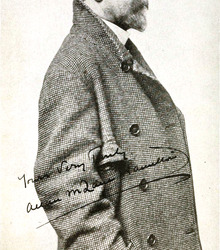
(Photos of Allan McLane)
July 9, 1884, Philip Hamilton II died, “comparatively poor,” in Poughkeepsie, New York.
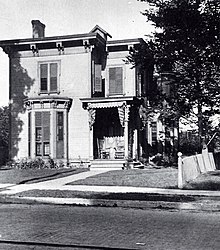
(Philip and Rebecca McLane Hamilton's home in Poughkeepsie, New York.)
#amrev#american history#american revolution#civil war#philip hamilton ii#louis mclane hamilton#allan mclane hamilton#rebecca mclane hamilton#hamilchildren#history#hamilton family#hamilton children#hamilkids#hamilton kids#queries#sincerely anonymous#cicero's history lessons#biography
32 notes
·
View notes
Text





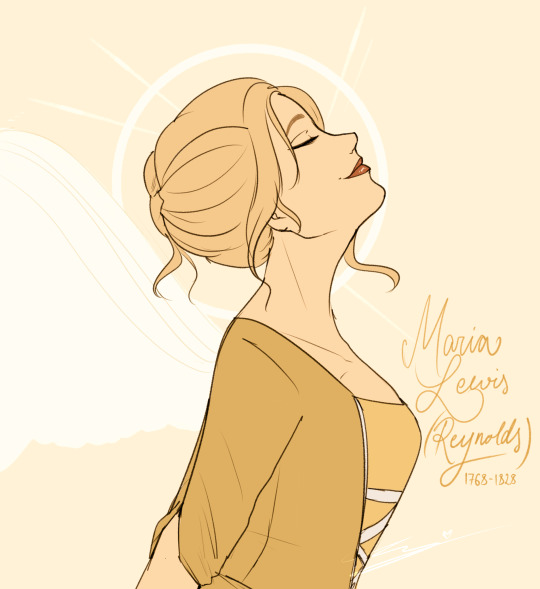



Happy belated Mother's day 💛 Here are some Hamilton ladies that were mothers :)
#historical hamilton#catherine van rensselaer schuyler#rachel faucette buck#rachel faucette#angelica schuyler church#elizabeth schuyler hamilton#eliza schuyler hamilton#margarita schuyler van rensselaer#peggy schuyler van rensselaer#maria lewis#maria reynolds#mary morris hamilton#maria eliza van den heuvel hamilton#rebecca mclane hamilton
282 notes
·
View notes